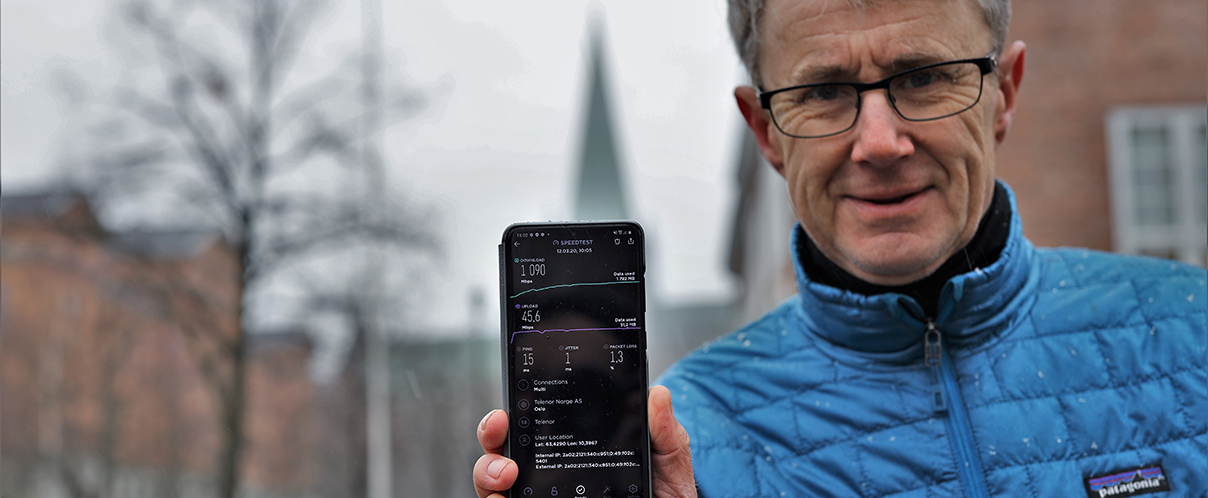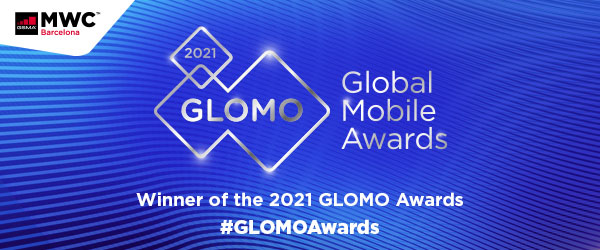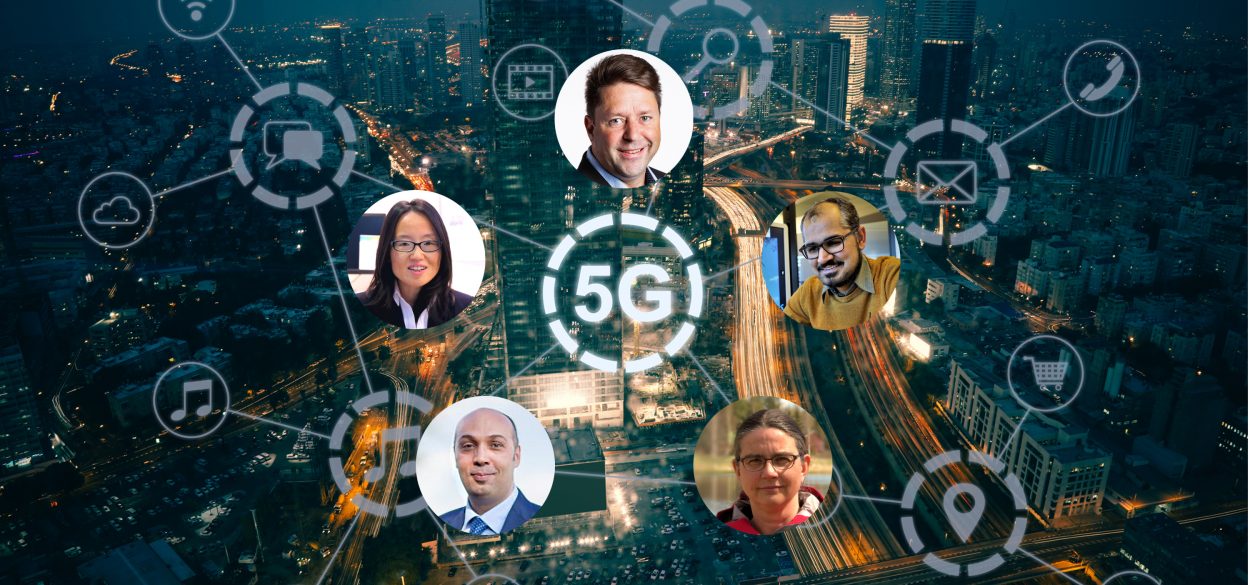Telenor and 5G
With exceptional speeds and capabilities, 5G represents huge potential for empowering societies, bringing about innovation across industries and transforming how people and devices communicate. Explore how Telenor works with 5G and how our experts are seeing new ways to harness its potential.

The lowdown: What is 5G?
In simple terms, 5G is the fifth-generation technology standard for cellular networks. Its primary function is to advance communication services becoming faster, more secure, more reliable and with higher capacity. This meets a range of demands from enterprises and consumers. One item is network slicing, which is a virtual partitioning of network resources that may provide a ‘my network’ experience for individual customers5G is a game changer for the industry as it also triggers interests outside telco to drive digitalisation. However, 5G does not happen on its own; it requires partnerships between various customers, industry players, telco operators and governments.
The potential: How Telenor works with 5G
5G has the potential to support several types of use-cases besides broadband services. Initial services commercially launched on 5G commonly include mobile broadband (smartphones) and fixed wireless access. At Telenor, we commercially launched fixed wireless access in Finland December 2019. This has been followed by additional services for mobile broadband and fixed wireless access in several of our countries. With 5G we attain higher speeds and lower latencies compared with 4G. However, customer use in the initial phase is quite similar for 4G and 5G, as the basic behaviour would typically not change merely because a customer is using a 5G-capable smartphone. Still, heavy usage customers are typically the first to move to 5G, which results in overall consumption per customer being greater on 5G.
In addition to broadband connectivity cases, we have engaged in more advanced use cases, such as media management (in collaboration with the Norwegian state broadcaster NRK), mission critical communication (in collaboration with Norwegian Defence), medical monitoring by sensors in bodies (in collaboration with Norwegian hospitals), supporting autonomous vessels (in collaboration with Yara). In addition to the research activities, we have delivered several commercial enterprise solutions where 5G plays a central role related to private networks and edge cloud.. We have achieved several industry awards for our activities such as – ICCA 2022 winners announced - Critical Communications Today (criticalcomms.com) and Telenor Research and Telenor Digital win GLOMO Awards for cutting-edge 5G solution and digital distribution platform.
The expert angle: Our views on the 5G future
Patrick Waldemar, VP Head of NG Network Technology at Telenor Research
Patrick Waldemar, VP Head of NG Network Technology at Telenor Research
“At Telenor our purpose is empowering societies and connecting you to what matters most. There are a lot of future applications that, when powered by 5G, can deliver on that purpose. That means an exciting future for areas such as health care or transport. I am really excited to see how the future application of 5G will empower societies.”
Jarkko Laari, Director RAN and 5G programme owner at DNA
“We have only taken the very first steps of the 5G journey and already we can see the beneficial effect it has on services like fixed wireless access. 5G is uplifting wireless connectivity in many ways and will open doors for mobile technology to whole new application areas. I’m happy to be part of this development and eager to see where this path takes us in the upcoming years.”
Ingeborg Øfsthus, Chief Technology Officer, Telenor Norway
“Telenor Norway is rolling out 5G as part of the full modernisation of our entire mobile network. This represents the most efficient way to provide our customers with the ever-increasing data volumes they require and will also allow us to offer user-friendly mobile broadband solutions to homes and enterprises. 5G will enable the digitalisation of Norway through robust, low latency infrastructure that will support new ways of living and working.”
The journey so far: Telenor’s 5G milestones to date
July 4, 2018: Telenor Group leads the 5G Verticals INNovation Infrastructure (5G-VINNI) initiative, an EU-led project to accelerate the uptake of 5G across Europe
November 8, 2018: Telenor Norway opens Scandinavia’s first 5G pilot in Kongsberg
February 25, 2019: Telenor and Nokia begin testing 5G capabilities in Denmark
February 26, 2019: Telenor Norway announces that it will establish a 5G pilot at Elverum and other locations
March 27, 2019: Telenor Norway announces that Trondheim will be the first major city to get 5G
May 27, 2019: Telenor’s Malaysian operator Digi and ZTE sign MoU to explore 5G technology in Malaysia
May 31, 2019: Dtac teams up with state telecom agencies TOT and CAT Telecom to test 5G wireless broadband technology
July 10, 2019: Telenor Norway announces its next 5G pilot at Aksvoll
September 9, 2019: Dtac launches 5G testbed at its internal Never Stop Café
September 17, 2019: Telenor opens a 5G base station at its headquarters in Oslo
September 19, 2019: Digi partners with Cyberview on 5G OpenLab at Cyberjaya
September 26, 2019: Telenor launches Scandinavia’s largest 5G pilot at Elverum and announces pilots in nine further locations in the country. Telenor conducts Norway’s first video call over 5G
October 20, 2019: Telenor launches the world’s northernmost 5G pilot on the Norwegian Arctic archipelago of Svalbard
December 2019: 5G-VINNI’s test sites open up for end user testing
December 13, 2019: Telenor selects Ericsson as its 5G radio access network vendor
March 13, 2020: Telenor Norway opens Norway’s first commercial 5G network in Trondheim and eight other locations across the country






